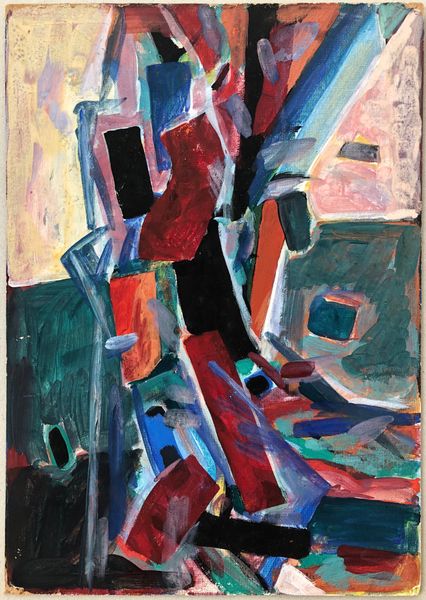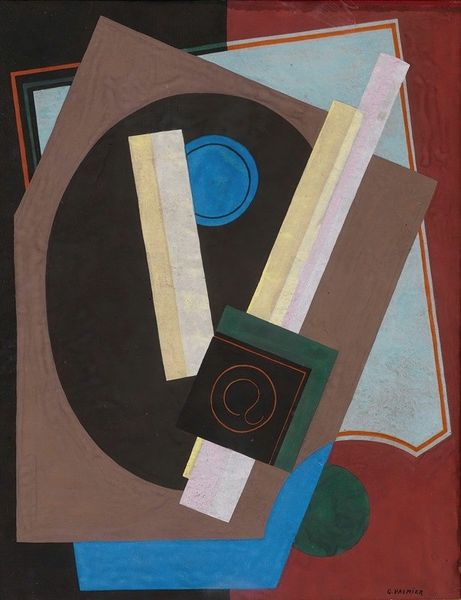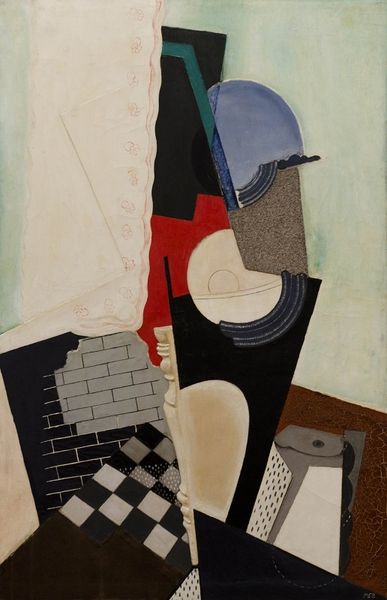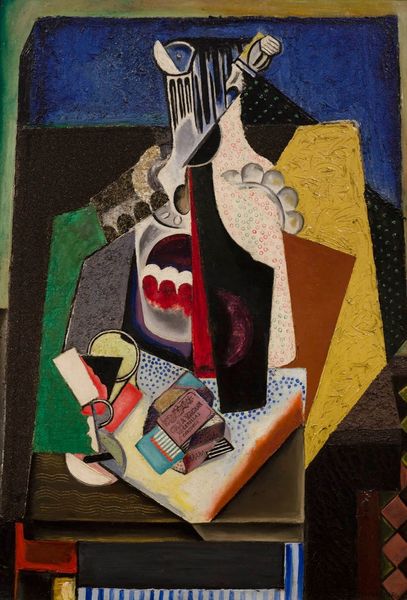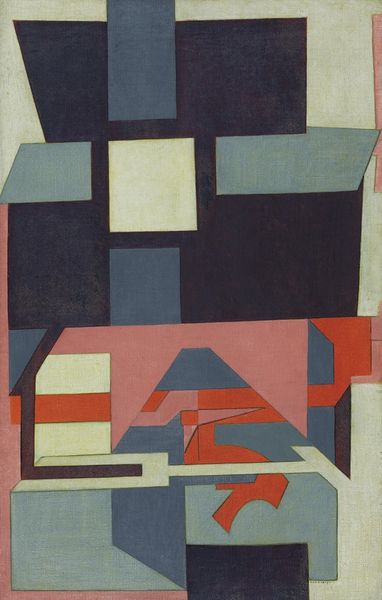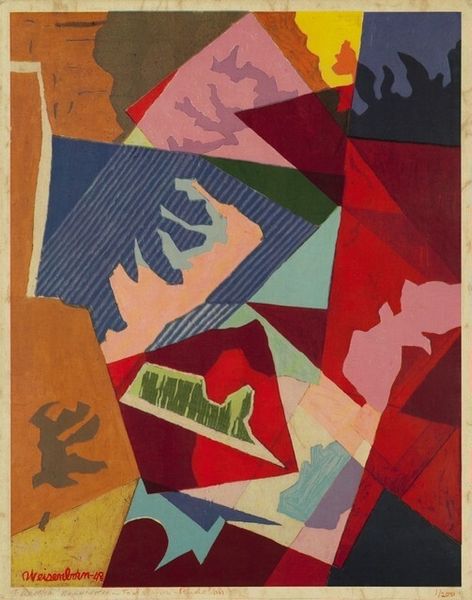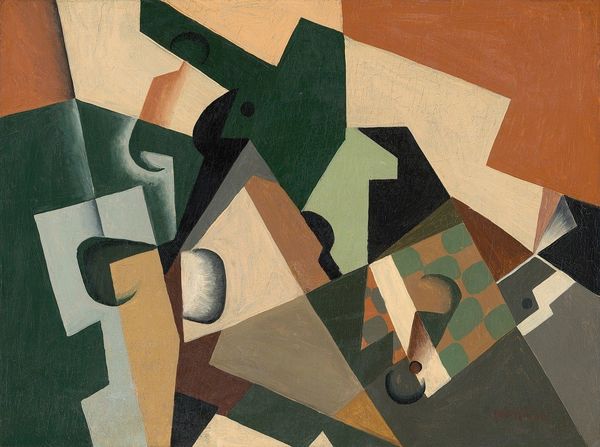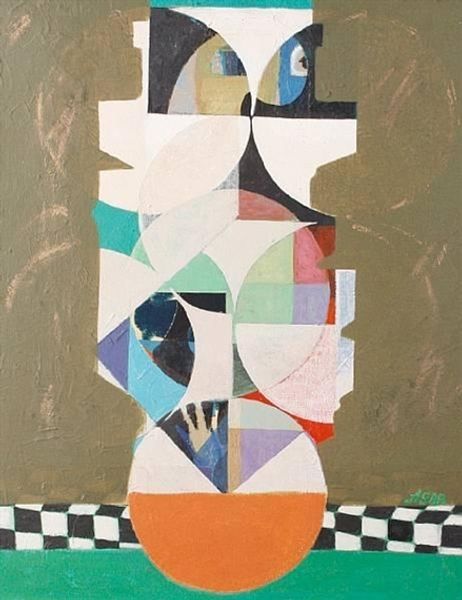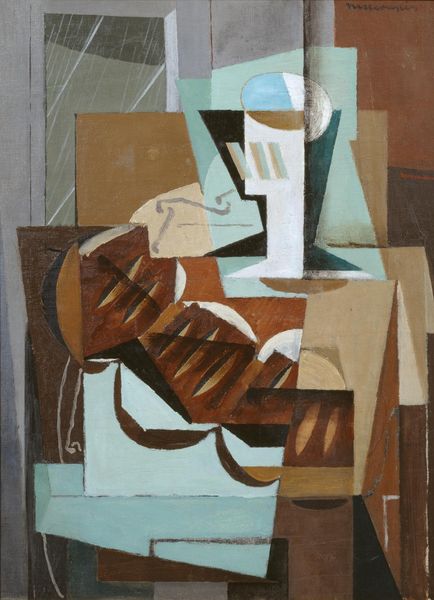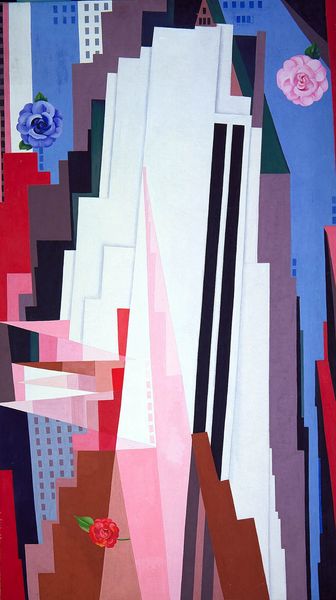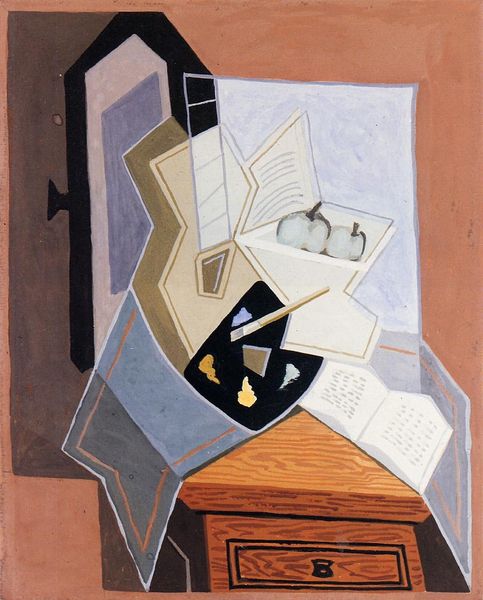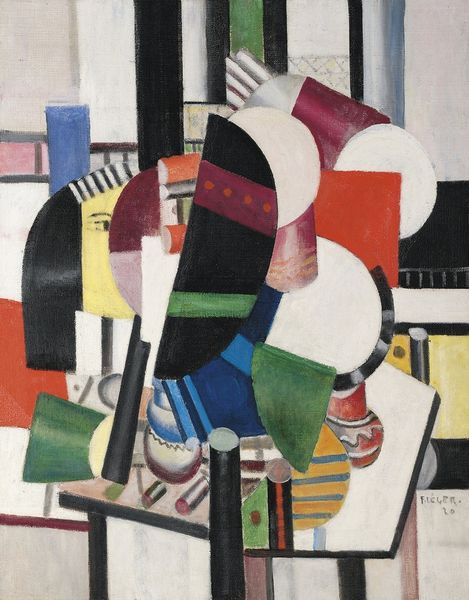
painting, oil-paint
#
cubism
#
abstract painting
#
painting
#
oil-paint
#
abstract
#
oil painting
#
geometric
#
abstraction
#
painting art
Copyright: Public Domain: Artvee
Editor: So, here we have Juan Gris's "Checkerboard and Playing Cards" from 1915, an oil painting that dives deep into Cubism. There's a playful yet almost melancholic feel to the fractured objects. I'm curious, what story does this arrangement of items tell you, especially within the historical context of its creation? Curator: The placement of everyday items such as checkerboards and playing cards might appear banal initially. But during the First World War, when traditional societal structures were violently collapsing, works like this were a kind of cultural commentary. These familiar games became metaphors for strategy, chance, and perhaps even the absurdity of war. Think about it – what are the "rules" being broken, reshaped, or redefined here? Editor: I guess the fracturing itself reflects the breaking of those established rules. But why these objects? Were checkerboards and cards particularly meaningful? Curator: Certainly. Board and card games offered a form of structured entertainment accessible across social classes. They represent a microcosm of society. The art world at the time was seeing a huge amount of work around popular culture in order to move past old hierarchies. Gris is saying something by elevating them. Editor: So, by depicting these accessible items in a fractured style, Gris is leveling societal critiques at structures that led to chaos during the war? Curator: Precisely. And notice how the painting flattens space, disrupting traditional perspective. It's as though Gris is not just representing objects, but the very idea of representation, challenging viewers to construct their own meanings from the fragments. Editor: It’s fascinating how everyday items, reshaped by Cubism, could be used to reveal historical and cultural upheaval. It completely transforms how I see this painting. Curator: Absolutely, seeing art in its specific time enriches its significance. And thinking about art this way encourages viewers to analyze its place in history!
Comments
No comments
Be the first to comment and join the conversation on the ultimate creative platform.
